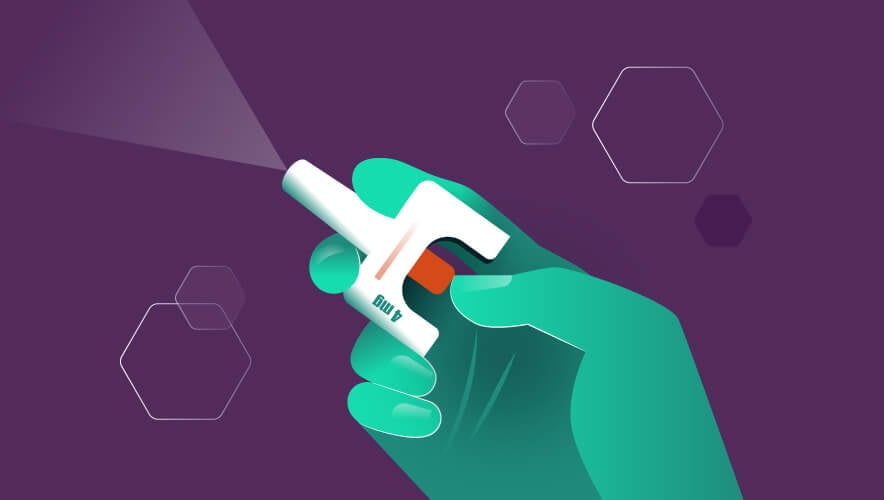How to Establish a Policy for Using Naloxone, a Lifesaving Tool
Today’s businesses attract customers and visitors from all spectrums of society. While the goal of most organizations is to accomplish the goals of the business, provide exceptional customer service, and lead their chosen industry, the occasional medical emergency is unavoidable. Highly trained company emergency medical service (EMS) and security personnel are instrumental in keeping customers and visitors safe.
Because companies are not immune to the adverse effects of society’s opioid crisis, it behooves designated company personnel to be trained and equipped with the latest tool in rescuing people from opioid overdose, naloxone (Narcan). Businesses and communities across the United States are taking advantage of this easy-to-administer lifesaving tool to save lives and protect communities.
In 2017, U.S. President Donald Trump declared the opioid crisis a public health emergency. The U.S. Centers for Disease Control and Prevention has designated opioid overdose as an epidemic in the United States, with nearly 645,000 overdose deaths from 1999 to 2021.
The adverse effect on communities has been profound and pervasive. With the advent of highly concentrated synthetic opioids like fentanyl, overdose from intentional or accidental contact by customers, visitors, and employees presents a danger that can have lethal consequences.
Naloxone is a prescription medication sold under the brand name Narcan. Administration of Narcan by a trained individual can save the life of a person experiencing an opioid overdose. Naloxone instantly binds to the receptors in the brain targeted by the opioid and restores normal breathing. To be effective, Narcan must be administered quickly upon recognition that the person is experiencing an opioid overdose. Waiting for outside EMS rescue personnel to arrive on property may be too late for a person experiencing respiratory arrest from an opioid overdose.
Because the training on administering Narcan is straightforward and requires no specialized medical certification, many companies have invested in training designated personnel, such as EMS and security staff, and ensured an inventory of Narcan is available on property. Many medical facilities and health service departments across the United States have established Narcan training programs and supply the medication free to program participants.
Companies have developed staff policies outlining training of designated personnel in the recognition of opioid overdose and the application of naloxone rescue devices, reporting and documentation of naloxone use, and storage and replacement of rescue kits. Such policies usually begin with a commitment by the business to train and equip designated company personnel with Narcan rescue devices to use in opioid overdose situations to attempt to reduce opioid-related fatalities within the business.
Training of company personnel authorized to administer naloxone is conducted by a state-certified naloxone trainer and covers risk factors for overdose, how to recognize an overdose, administering naloxone, overdose aftercare, and how to store naloxone kits. Refresher training is usually conducted on an annual basis.
Company policies may outline the following steps for the administration of naloxone after a person has been identified as experiencing an opioid overdose:
- notification of emergency responders regarding the medical emergency
- use of personal protective equipment and supplies to protect against bodily fluid transfer
- deployment of the naloxone rescue kit according to manufacturer’s specifications and training
- what to do if the first dose is not effective (If after two to three minutes of unresponsiveness and no improvement in the patient, a second dose of naloxone shall be administered.)
- continued care and assessment of patient
- how to inform EMS personnel of the treatment provided
- how to dispose of used rescue kits (Naloxone rescue kits are considered biohazardous material and should be given to EMS for safe disposal.)
Companies may develop a naloxone use report that may contain the patient’s identifying information and the following:
- amount of naloxone used and administration method
- any adverse reactions on the part of the patient
- outcome of the incident
Policies regarding the storage and replacement of naloxone rescue kits should include guidance around storage, inspection, and maintenance of the supply, such as:
- Naloxone rescue kits shall be stored according to manufacturer specifications.
- It shall be the responsibility of designated personnel to inspect kits upon receiving them.
- Any damaged or expired kits should be immediately replaced.
- Any kits that have been used should be replaced as soon as possible by the designated program coordinator.
- Kits marked to expire within a month shall be replaced by the designated program coordinator.
On 29 March 2023, the U.S. Food and Drug Administration announced the approval of the first nonprescription naloxone product, Narcan 4 milligram (mg) naloxone hydrochloride nasal spray. Once the transition to nonprescription (also known as over-the-counter) status is complete, Narcan 4 will be available directly to consumers in drugstores, convenience stores, grocery stores, and gas stations, as well as online.
According to the Bureau of Justice Assistance, National Training, and Technical Assistance Center, “The risk of liability for a law enforcement officer or their employer resulting from naloxone administration is low. From a legal standpoint, it would be extremely difficult to win a lawsuit against an officer who administers naloxone in good faith and in the course of employment. Overdose response activity is no different from any other good faith effort to provide assistance in an emergency.”
Waiting for outside EMS rescue personnel to arrive on property may be too late for a person experiencing respiratory arrest from an opioid overdose.
As of 2021, 47 U.S. states and the District of Columbia have enacted Good Samaritan and naloxone access laws, according to the U.S. Government Accountability Office (GAO). These provide legal protection for individuals—law enforcement or civilian—who administer naloxone in good faith to a person experiencing an overdose. These laws differ from state to state, but generally protect individuals from liability resulting from administering naloxone.
“GAO found that, despite some limitations, the findings collectively suggest a pattern of lower rates of opioid-related overdose deaths among states that have enacted Good Samaritan laws, both compared to death rates prior to a law’s enactment and death rates in states without such laws,” the office’s report said. “In addition, studies found an increased likelihood of individuals calling 911 if they are aware of the laws. However, findings also suggest that awareness of Good Samaritan laws may vary substantially across jurisdictions among both law enforcement officers and the public, which could affect their willingness to call 911.”
It behooves security professionals to research applicable laws in the jurisdictions where they work regarding legal protections in administering naloxone.
Customer, visitor, and employee safety are of paramount importance to all organizations. Mitigating risks such as unintended opioid overdose has been greatly facilitated by the development of naloxone rescue kits. Investing in this potentially lifesaving resource and partnering with health service agencies reinforces the organization’s commitment to community safety.
Dave Vialpando, CPP, MBA, CFE, CFCS, is a 37-year law enforcement veteran, having served as a police officer in Richmond, California, and as a special agent with the California Attorney General’s Department of Justice, serving in both the Bureau of Narcotic Enforcement and the Bureau of Gambling Control, where he served as the special agent-in-charge of the Bureau’s southern California offices. Vialpando currently serves as the executive director of the Pokagon Band Gaming Commission for the Pokagon Band of Potawatomi Indians of Michigan and Indiana. Vialpando also serves as vice-chairman of the board of directors of the Tribal Gaming Protection Network.











